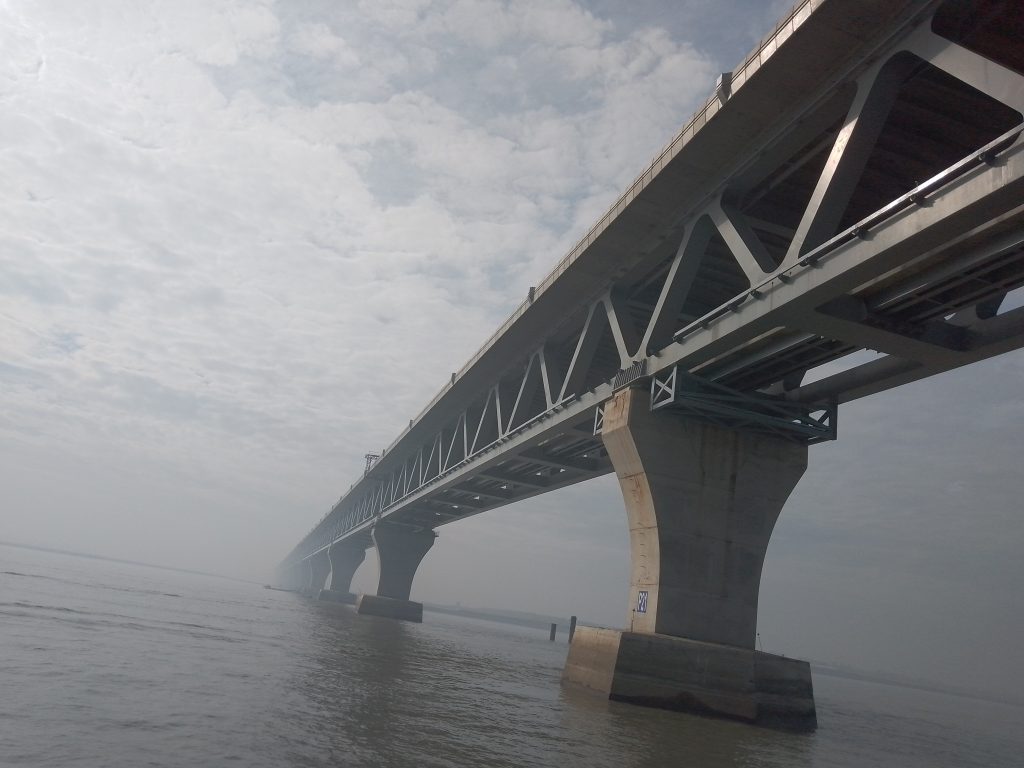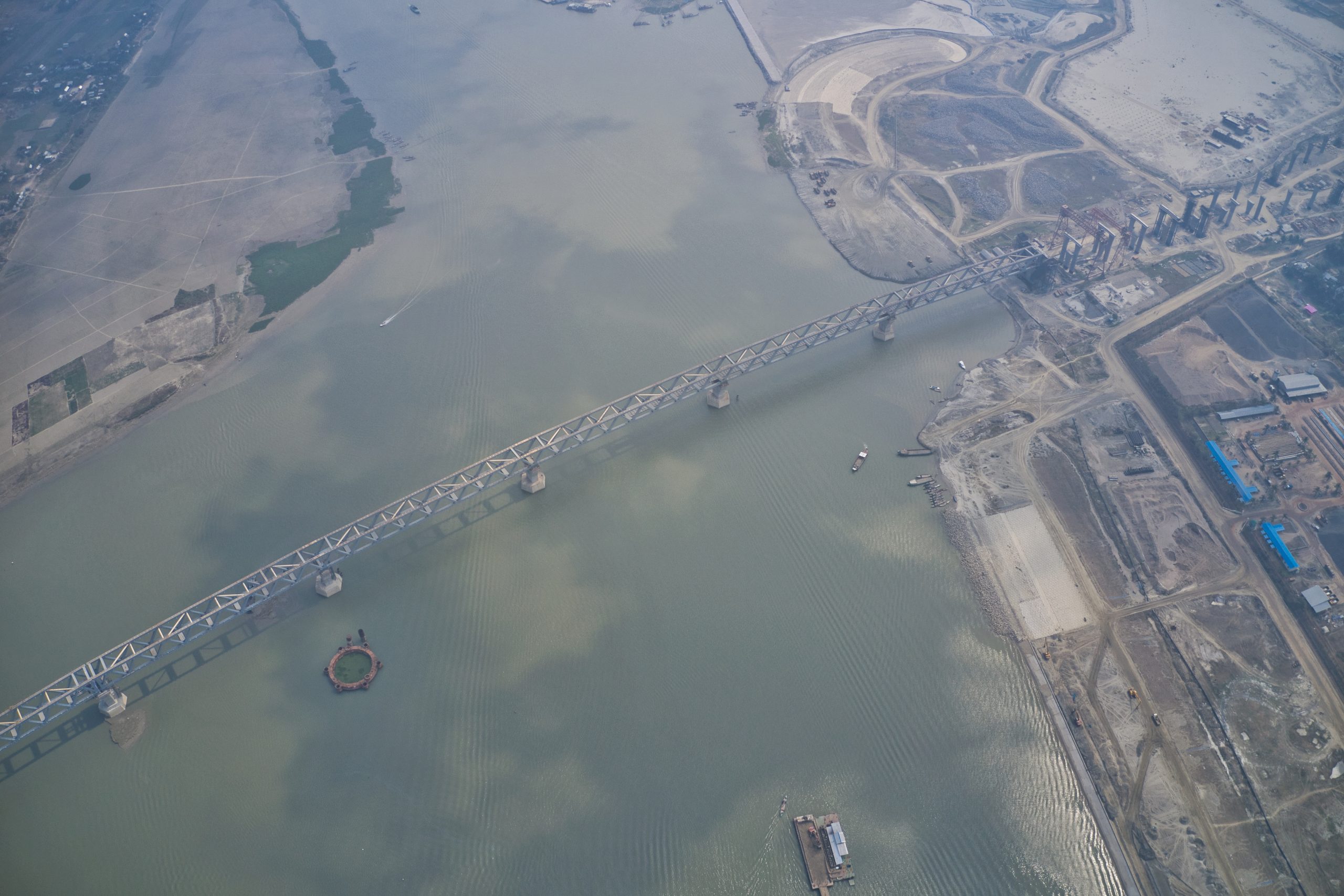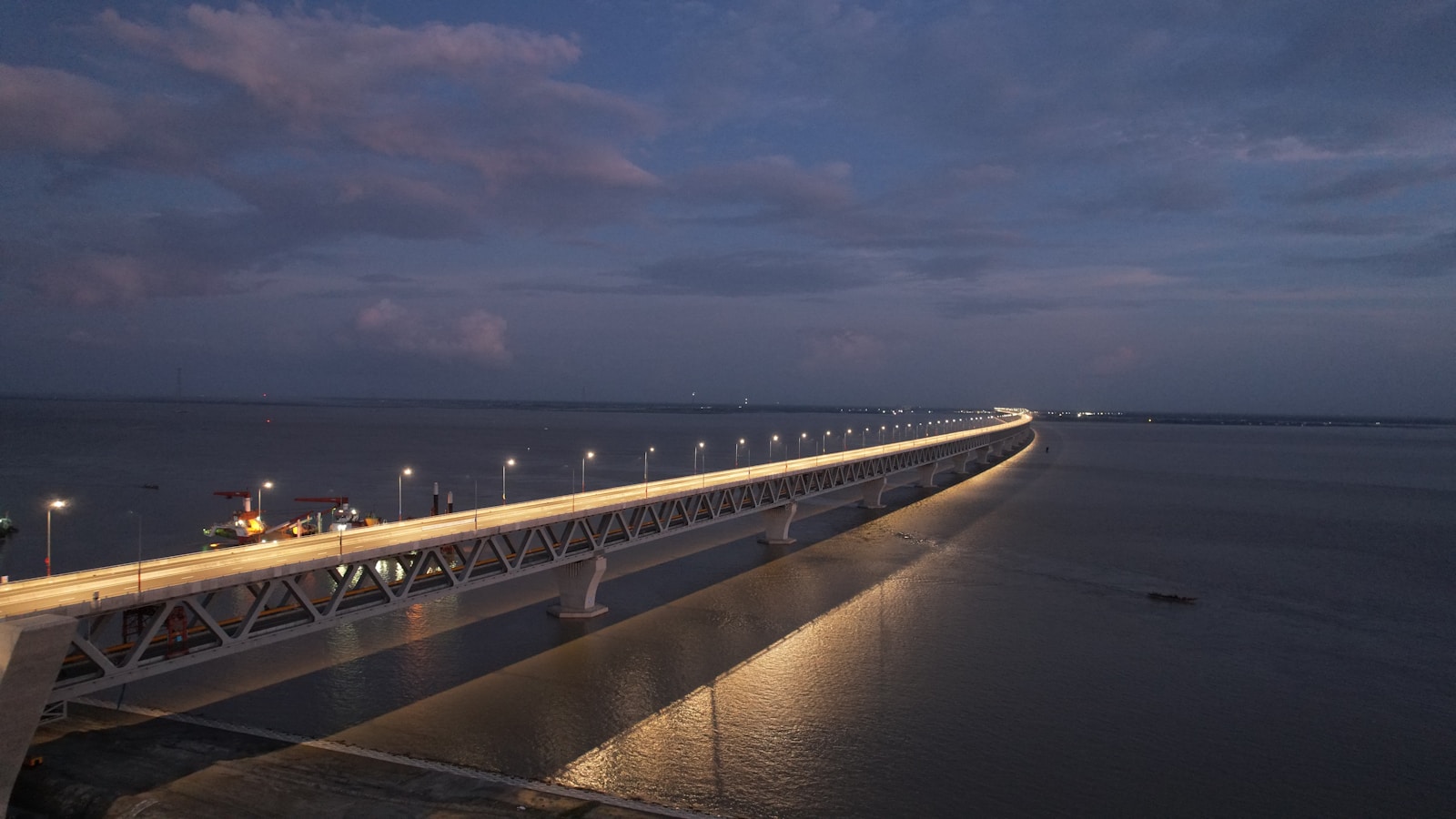With the inauguration of Padma Bridge in Bangladesh, Prime Minister Sheikh Hasina has turned adversity into an opportunity. According to economists, Padma Bridge will contribute 1.2 per cent to annual GDP growth.
Bangladesh has come of age as a huge turnaround story with the formal inauguration of the 6.15-km rail-road bridge on the Padma River on June 25, Saturday.
This is the country’s biggest infrastructure project since independence from Pakistan, which left Bangladesh bloodied and battered. But in 50 years down the line and with Sheikh Hasina at the helm, this youngest nation in South Asia has excelled to become the bull case for the region.
Bangladesh can finish the $3.9 billion Padma Bridge project (original estimate) with its own funds and has paid back fair and square. Hasina’s long-term adversary, the US, sided with Pakistan in the 1971 liberation war and reputedly persuaded the World Bank to pull out of the project.
For PM Hasina, the rosy economic picture emanating from the Padma Bridge will come as a shot in the arm in the rundown to the parliament elections due in December 2023. Despite opposition protests over enforced disappearances and rigged elections, even her critics have admitted that Hasina has a brilliant record of economic growth and human development during her thirteen years in power.
But for Sheikh Hasina, this is a moment of great pride and vindication of her decisive leadership that has given Bangladesh its ‘Golden Decade of Development’.
It was she who decided to do the project with Bangladesh’s own resources after the World Bank stalled the proposed funding, citing ‘credible evidence of corruption’, later trashed away by a Canadian court.
“I am the daughter of the great Bangabandhu (Sheikh Mujibur Rahman). I do what I promise,” Hasina told mediapersons recently, recalling how detractors including her bete noire, Khaleda Zia (opposition BNP chairperson) had ruled out completion of the Padma Bridge.
PADMA BRIDGE TO BOOST GDP
Economists, like former Bangladesh Bank governor Atiur Rahman, predict the Padma Bridge, which will now connect the capital Dhaka with all southern districts and the country’s second port, Mongla, will contribute 1.2 per cent to annual GDP growth.

“The bridge will add a whopping $10 billion to the national GDP,” according to a number of national economists too.
Bangladesh has now bridged its two mighty rivers, Padma and Jamuna, which makes the country an integrated and well-connected economy.
WHY IS PADMA BRIDGE ‘CAN DO’ MOMENT FOR HASINA?
Since independence, the entire population of the southern region had to bank on a waterway to cross the Padma River and reach the capital. Speedboats, launches and ferries were the sole hope and crossing this treacherous river, second only to the Amazon, often turned out fatal as countless lives were lost every time a boat or a launch capsized.

“Few in Bangladesh know all our rivers as well as Sheikh Hasina, because she has physically visited every remote nook and corner of the country on her return home in 1981 to take charge of the Awami League. The moment she came to power in 1996, she ensured the completion of the Jamuna Bridge and laid the foundation stone of the Padma Bridge,” said former Information Minister Tarana Halim.
“Her vision of these bridges as part and parcel of an integrated economy is now materialised in a really positive direction. It will spur growth in the entire eastern part of South Asia,” said Indian economist Bipul Chatterjee.
Following the pre-feasibility test by the Awami League government, then Prime Minister Sheikh Hasina laid the foundation stone for the construction of the bridge on 4 July 2001.
In the same year, the Bangladesh Nationalist Party and Jamaat e Islami combined alliance formed the government and the project hit a huge roadblock.
However, in the run up to the Dec 2008 parliamentary elections, the Awami League pledged to build the Padma Bridge in its poll manifesto. Immediately after she came to power, Hasina reached out to multilateral funding agencies like the World Bank for the Padma Bridge project.
HOW DID HASINA PREVAIL WORLD BANK’S CONSPIRACY?
In April 2011, the World Bank signed an agreement with Bangladesh to finance this mega bridge. Strangely, within five months of the signing, the global lending agency raised allegations of corruption without releasing a single penny for the project.
Soon after, the Hasina government launched an inquiry and her close associates, from an economic advisor to a minister and a secretary, had to step down in a desperate effort to comply with the World Bank’s prescriptions.
The World Bank even went ahead with the appointment of Gabriel Moreno Ocampo to investigate the alleged corruption over the Padma Bridge project.
Finally, almost six years later, a Canadian court found those allegations levelled by the World Bank as being on ‘flimsy grounds and faulty evidence’ in 2017.
But fed up with the World Bank’s flip-flop, Hasina decided to fund the project with Bangladesh’s own resources. Many thought this was madness, but time has vindicated what Indian High Commissioner Vikram Doraiswamy recently described as ‘Hasina’s exceptional courage and sincerity.’
A LESSON FOR CIVIL SOCIETY AND NGOs
Like her father, Hasina knows exactly the needs of the country’s people and is very determined to go the extra mile when it comes to making life easier for the public. And her firm conviction to go ahead with this engineering marvel, braving the World Bank, surely stands as a clear marker.
Ironically, in Bangladesh, some groups under the facade of civil society often conveniently promote the western narrative of development and undermine the role of leaders like Bangabandhu, while Hasina has not been spared too. Days after WB brought such allegations, those groups went gaga over Hasina, with some even demanding the resignation of Hasina as the only way out to build the bridge, a demand only to boost the morale of the Islamist opposition party.
A look at the tenor of that campaign would surely put their credibility on line, while their actions can best be described as a ‘force multiplier’ for the WB.
“When Hasina’s model of distributive justice lifted millions out of poverty and helped Bangladesh march past its neighbours in terms of human development indices, the same quarter went hell bent on showering praise on Dr Yunus and other NGOs. Of course, NGOs have played a significant role in the country’s pursuit to emerge as an Asian tiger, but believing that narratives like NGOs have a bigger role over government is a mere joke, ” said Ajoy Das Gupta, an eminent researcher and journalist.
BIG BOOSTER FOR REGIONAL TRADE
The Padma Bridge will sharply boost regional connectivity with India as the main beneficiary. Rail and road travel between Calcutta and Dhaka will be reduced by half, with a similar cascading effect on travel time between West Bengal and India’s northeastern states.

A World Bank report observed last year that improved connectivity between Bangladesh and neighbouring Indian states can boost national incomes of the two nations by 8 to 10 per cent and exports by 182 to 297 per cent.
“The opening of the bridge to road and rail traffic will bring immediate benefits to the direct users. The road distance from Dhaka to nearly all major destinations in the southwest region will be reduced by 100 kilometres or more, bringing tremendous savings in the time and costs of passenger and commodity movement, vehicle operation and maintenance costs and reducing wasteful burning of fossil fuels,” said Zahid Hussain, former lead economist at the World Bank.
Significant impacts are also expected on international trade between neighbouring countries such as India, Nepal, Bhutan, and Myanmar.
The southwest region, approximately 27 per cent of the country’s land area, and home to nearly a quarter of its over 160 million population, has remained one of the least developed parts of Bangladesh, primarily due to lack of connectivity to the rest of the country, according to an Asian Development Bangladesh (ADB) study in 2011.
The Padma Bridge will be an integral part of the Asian Highway One and Trans-Asian railway network systems (Sylhet-Kanchpur-Dhaka-Mawa-Jashore-Benapole, connecting Calcutta in eastern India, said the World Bank’s appraisal report.
“This report card is what she will hold up to the nation to beat incumbency when she seeks a record fourth term in power,” said Sukharanjan Dasgupta, who has authored books on Bangladesh.
“There is no leader in South Asia who can come up with such a strong track record of economic growth which trickles down,” Dasgupta said.


